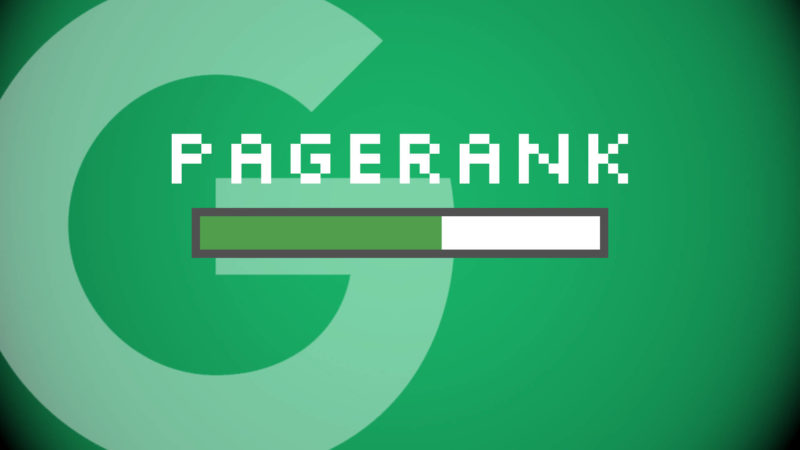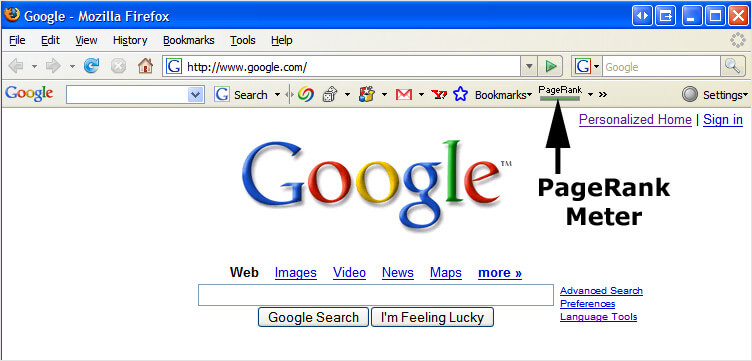RIP Google PageRank score: A retrospective on how it ruined the web
While Google will remove PageRank scores from public view in the coming weeks, the way those scores dramatically reshaped the web will remain.

PageRank — the secret sauce that Google used to become the giant of the search world — is no more. No more for the public, that is. Google’s numeric rating of how important it considers pages to be will soon no longer be accessible to the public.
Good riddance.
Ever gotten a crappy email asking for links? Blame PageRank.
Ever had garbage comments with link drops? Blame PageRank.
Ever had to ferret out the how and why you should make use of the nofollow attribute on links? Blame PageRank.
More appropriately, blame Google for ever making the PageRank score visible. When Google first started, PageRank was something it talked about as part of its research papers, press releases and technology pages to promote itself as a smarter search engine than well-established and bigger rivals at the time — players like Yahoo, AltaVista and Lycos, to name a few.
When Google unleashed PageRank scores
Where it went wrong for the web was in 2000, when Google released the first version of its Google Toolbar for Internet Explorer. The toolbar made it easy to search Google directly from within IE. It also gave those who enabled the PageRank meter to see the PageRank score of any page they were viewing:
The screenshot above is from a later version of the Google Toolbar, one that eventually came out for Firefox. It shows how the PageRank meter looked. The more green in the bar, the more important Google deemed your page to be for ranking purposes. If you hovered over the meter, you got a score from 0 to 10:
Most people who used the Google Toolbar probably never went through the effort of enabling the PageRank meter, which Google offered as an incentive to web surfers, a way for them to understand the quality of pages encountered when browsing (and a way for Google to understand what people were viewing beyond Google itself). But one group was very inclined to make the effort: SEOs.
Wanna buy a PageRank boost?
For those doing search engine optimization, the toolbar was an amazing present, a numeric rating of how important Google considered any of their pages to be. It was also a terrible trap for many SEOs and a disaster for the web as a whole.
PageRank always was and remains only one part of the Google search algorithm, the system that determines how to rank pages. There are many other ranking factors that are also considered. A high PageRank score did NOT mean that a page would rank well for any topic. Pages with lower scores could beat pages with higher scores if they had other factors in their favor.
If you want even more background about this, see my primer from a few years ago: What Is Google PageRank? A Guide For Searchers & Webmasters. The short story is that by giving out a PageRank score, many SEOs obsessed on that one metric. In response, a market emerged to serve them.
[pullquote]Google had positioned links as votes cast by the “democratic nature of the web.” Link networks were the Super PACs of this election, where money could influence those votes.[/pullquote]
You want better PageRank? Then you want links, and so the link-selling economy emerged. Networks developed so that people could buy links and improve their PageRank scores, in turn potentially improving their ability to rank on Google for different terms. Google had positioned links as votes cast by the “democratic nature of the web.” Link networks were the Super PACs of this election, where money could influence those votes.
Google wasn’t happy with the Pandora’s Box it had opened. It began to fight back, with its most famous action against a network known as SearchKing, penalizing the site and some of those in the network with PageRank score reductions or actual removal from Google. SearchKing sued Google. Google won, a judge ruling that its search results were entitled to First Amendment protection as opinions.
That didn’t stop link selling. The quest for boosting PageRank scores quickly, rather than earning them naturally, continued for many. Link networks went underground or at least claimed Google couldn’t find them, until it did. No matter. As one closed, another came up in its place.
And then, the link spam
Meanwhile, the link spam began. People chasing higher PageRank scores began dropping links wherever they could, including into blog posts and forums. Eventually, it became such an issue that demands were raised that Google itself should do something about it. Google did in 2005, getting behind the nofollow tag, a way to prevent links from passing along PageRank credit.
If you want to know more about nofollow, see our What Is The Nofollow Tag; When & How To Use It page. The short story here is that nofollow certainly didn’t end link spam. It did, however, give enough of an impression that Google tried to fight it in some quarters that Google was no longer held so accountable for it.
The slow death of PageRank score
Ironically, the Google Toolbar that launched PageRank hysteria in 2000 is a fading memory. After a decade of growth, it suffered when Google launched its own Chrome browser with search from the address bar built-in. That left little reason to get the Google Toolbar, not that you could — Google never released a version for Chrome.
PageRank in the toolbar took other blows. Firefox support was dropped in 2011. Google took 10 months in 2013 to finally update the PageRank scores it was feeding into the toolbar for IE users. To our knowledge, it never updated the scores after that.
Meanwhile, PageRank scores reported through Google Search Console were dropped in 2009. The Google Directory, a hierarchical guide to the web based on the Open Directory, was closed in 2010, taking the PageRank scores it displayed with it.
PageRank as a visible score has been dying a slow death since around 2010, I’d say. Pulling it from the Google Toolbar makes it official, puts the final nail in the visible PageRank score coffin. The few actually viewing it within Internet Explorer, itself a depreciated browser, aren’t many. The real impact in dropping it from the toolbar means that third parties can no longer find ways to pull those scores automatically.
The post-PageRank score world
PageRank, Google’s original secret sauce, finally goes back to being secret. Only Google will know the scores, which it will continue to use mixed in with the many other factors that make up its ranking algorithm.
The absence of PageRank scores may cause some to seek alternatives, estimates from third parties about how authoritative pages might be. These remain, of course, just guesses. Only Google itself knows the actual PageRank score for a page — and as can’t be said enough, the score alone isn’t the only thing that determines if a page ranks well.
In other words, don’t fixate on scores, either Google’s scores, for the remaining few weeks they’ll be around, or third-party scores. For some, they can be a useful way to focus. But for too many, they can become an obsession that pulls away from other types of SEO work that can be done.
Finally, with PageRank scores going away, we all can enjoy a peaceful web where no one’s dropping links in comments, emailing pitches to buy links or causing publishers to fear they haven’t applied nofollow properly in sponsored content to avoid a possible Google penalty. No PageRank scores, no pressure about links!
Heh. Of course, none of that is going away. PageRank scores launched the link economy, but that economy long left the actual scores behind. It may make it harder for some to value the links they want to buy and sell, but links will continue to be brokered as long as people know that Google depends so much on them.
Contributing authors are invited to create content for Search Engine Land and are chosen for their expertise and contribution to the search community. Our contributors work under the oversight of the editorial staff and contributions are checked for quality and relevance to our readers. The opinions they express are their own.
Related stories
New on Search Engine Land

